Introduction
Have you ever found yourself dragging through your day, struggling to muster even a flicker of enthusiasm for tasks that used to excite you? Or perhaps you’ve noticed that no matter how much rest you get, you still feel mentally and physically exhausted, unable to shake the weight of stress. If this sounds familiar, you’re not alone. In fact, a recent study from Beyond Blue reported that one in five Australians experience burnout, often without realising what’s happening until it’s too late.
Burnout is a growing epidemic in today’s world, fueled by our ever-increasing workloads, constant connectivity, and pressure to perform. What starts as manageable stress can slowly evolve into full-blown burnout, a condition that can leave you feeling emotionally drained, disconnected from life, and unable to cope with everyday demands. Whether you’re juggling the demands of a high-pressure job, balancing family responsibilities, or managing the expectations you place on yourself, burnout can sneak up on anyone.
The good news? Burnout is preventable. With the right tools, such as evidence-based psychotherapy techniques and breathwork, you can regain control over your stress levels, protect your mental health, and avoid burnout before it takes hold. In this article, we’ll break down exactly what burnout is, how to recognise its early warning signs, and, most importantly, how to avoid it by using scientifically-backed methods.
If you’re struggling with stress or feeling overwhelmed, working with a professional like Tahn Miller at Amplify Therapies in Melbourne, Victoria, can provide the support you need. Tahn offers a range of strategies grounded in neuroscience and psychotherapy to help you overcome burnout and regain balance in your life. Keep reading to discover practical ways to safeguard yourself from burnout and live a healthier, more fulfilling life.
What is Burnout?
Burnout is a state of emotional, mental, and physical exhaustion caused by prolonged or excessive stress. It often manifests as a feeling of being overwhelmed, emotionally drained, and unable to meet constant demands. Unlike regular tiredness, burnout leads to a loss of motivation and reduced productivity, even in areas of life you once found fulfilling.
According to neuroscience research, burnout is linked to chronic activation of the brain’s stress response systems, particularly the amygdala and hypothalamus-pituitary-adrenal (HPA) axis, which regulates cortisol levels. Prolonged stress can impair the brain’s ability to process emotions and manage cognitive tasks effectively, leading to the symptoms of burnout.
Recognising Burnout: Early Warning Signs
Burnout doesn’t happen overnight. There are warning signs that can help you recognise it early and take steps to prevent it from worsening. Some common symptoms include:
- Emotional exhaustion: Feeling constantly fatigued and emotionally drained.
- Detachment: A sense of disengagement from work or personal responsibilities.
- Cognitive difficulties: Trouble concentrating or making decisions.
- Physical symptoms: Chronic headaches, sleep disturbances, or lowered immunity.
- Cynicism: A negative or detached attitude towards work, relationships, or life in general.
If you’re experiencing several of these symptoms, it may be time to reflect on your stress levels and consider strategies to avoid burnout.

How to Avoid Burnout
Avoiding burnout requires both proactive and reactive strategies, including psychotherapy techniques, breathwork, and lifestyle adjustments. Below, we’ll outline several evidence-based approaches to help you maintain balance.
1. Psychotherapy Techniques to Manage Burnout
Burnout is a multifaceted issue that requires targeted psychological intervention to address its deep-rooted causes. Psychotherapy plays a crucial role in not only alleviating the symptoms of burnout but also offering long-term strategies to help individuals build resilience and regain control of their lives. When you experience burnout, your brain’s stress response becomes overactive, leaving you in a chronic state of “fight or flight.” This state not only exhausts you mentally and physically but also alters how you perceive challenges, emotions, and even your self-worth. Fortunately, psychotherapy techniques can rewire these stress responses, bringing relief and a renewed sense of purpose.
Widely used and well-researched approaches for managing burnout such as Cognitive-Behavioural Therapy (CBT) and Strategic Psychotherapy (SP) work by identifying and changing the negative thought patterns that contribute to stress and emotional exhaustion.
For example, burnout is often driven by neurological patterns such as perfectionism and a high need for control, which inhibits a persons ability to know when to stop or how to delegate.
In addition to traditional CBT and SP, clinical hypnotherapy is gaining recognition as a powerful therapeutic tool for managing burnout, particularly in cases where emotional exhaustion and stress have become deeply ingrained.
Clinical Hypnotherapy
Clinical hypnotherapy involves guiding the individual into a deeply relaxed, focused state, often referred to as a “trance,” where the subconscious mind is more open to positive suggestions and reprogramming. This can be particularly useful for burnout, where beliefs about work, self-worth, and stress responses are hardwired patterns that can be reframed at a subconscious level.
Research has shown that hypnotherapy can help reduce stress, improve emotional regulation, and enhance overall well-being. A 2018 study published in the International Journal of Clinical and Experimental Hypnosis found that hypnotherapy significantly reduced levels of anxiety, depression, and stress among participants, many of whom reported long-lasting improvements after treatment. For individuals dealing with burnout, these findings highlight the potential of hypnotherapy to provide relief where conventional treatments may fall short.
One of the most effective approaches within clinical hypnotherapy for managing burnout is Ericksonian permissive hypnosis, which was developed by psychiatrist Milton H. Erickson. Unlike traditional directive hypnotherapy, which focuses on direct suggestions, Ericksonian hypnosis uses indirect language, storytelling, and metaphors to engage the subconscious mind.
This permissive style encourages the individual to generate their own solutions to problems, fostering a sense of autonomy and empowerment, which is essential in addressing the feelings of helplessness often associated with burnout.
Ericksonian Hypnosis
Ericksonian hypnosis aligns with modern neuroscience research on neuroplasticity, which shows that the brain has the capacity to form new neural connections in response to experience and learning. By using permissive suggestions, this form of hypnotherapy encourages the brain to rewire its responses to stress, helping to break the cycle of burnout.
For example, combining strategic psychotherapy techniques to identify effective patterns in other areas of a persons life and utilising hypnotic trance, a qualified therapist can help a client rewire those existing skills to the ineffective patterns they may be running to maintain burnout.
In clinical practice, hypnotherapy for burnout often involves sessions where the therapist helps the client enter a relaxed state and provides tailored suggestions aimed at reducing stress, improving sleep, and enhancing emotional resilience. Studies have also shown that hypnotherapy can lead to improved heart rate variability (HRV), an indicator of reduced stress and better autonomic nervous system balance.
This physiological response further supports recovery from burnout, as the body’s systems shift away from the chronic stress response and towards a state of relaxation and healing.
Another advantage of hypnotherapy is that it can provide rapid relief from the physical symptoms of burnout, such as insomnia, chronic fatigue, and headaches. By addressing the mind-body connection, hypnotherapy can alleviate these physical manifestations of stress, providing a more holistic approach to managing burnout. The techniques learned in hypnotherapy sessions, such as self-hypnosis or guided imagery, can also be practised independently by individuals to maintain their progress over time and prevent relapse into burnout.
At Amplify Therapies, Tahn Miller integrates clinical hypnotherapy into her practice, offering clients an evidence-based approach to combat burnout. With a combination of Strategic Psychotherapy and Ericksonian hypnosis, Tahn works to help clients reframe their thinking patterns, release deeply held stress, and restore balance to their emotional and physical well-being.

2. The Role of Breathwork in Preventing Burnout
While psychotherapy addresses the cognitive and emotional aspects of burnout, breathwork offers a highly effective method for tackling its physiological components. Burnout is not just a mental or emotional issue; it has profound effects on the body. Chronic stress triggers the body’s “fight or flight” response, flooding your system with stress hormones like cortisol and adrenaline. Over time, this continuous state of high alert wreaks havoc on the nervous system, leaving you feeling perpetually exhausted, anxious, and physically tense.
Breathwork, particularly neurodynamic breathwork, serves as a powerful technique to counteract these effects, helping to reset the nervous system, lower stress hormone levels, and bring the body back to a state of balance.
Neurodynamic breathwork is a dynamic, active form of breathing designed to influence brainwave patterns and induce a deeply restorative state. This technique involves controlled, rhythmic breathing patterns that stimulate the parasympathetic nervous system—the part of the nervous system responsible for rest and recovery. Unlike typical shallow breathing, which keeps the body in a stress response, neurodynamic breathwork emphasises deep, diaphragmatic breaths that slow down the heart rate, reduce cortisol production, and promote a state of relaxation.
One of the key principles behind neurodynamic breathwork is that the breath can regulate not only our physiology but also our emotional and mental states. By modulating the breath, we can directly influence the brain’s autonomic nervous system (ANS), which governs automatic bodily functions like heart rate and digestion. When stress activates the sympathetic nervous system (the “fight or flight” mode), neurodynamic breathwork helps to shift the balance back towards the parasympathetic nervous system, also known as the “rest and digest” state. In doing so, the brain transitions from high-alert, beta brainwave activity to calmer alpha or theta states, which are associated with relaxation, creativity, and emotional processing.
Circular Breathing
A commonly used technique in neurodynamic breathwork is circular breathing, where the inhale and exhale are connected without pauses. This continuous flow of breath energises the body while simultaneously calming the mind, creating a state of heightened awareness and relaxation. Through circular breathing, the brain releases tension stored in the body, often helping to process unresolved emotions related to stress or trauma. Regular practice of this technique has been shown to reduce anxiety, improve emotional regulation, and increase resilience to future stressors—all essential factors in preventing burnout.
Another breathwork practice with proven benefits for burnout prevention is box breathing. This technique involves inhaling for a count of four, holding the breath for four counts, exhaling for four counts, and holding again for four counts. Box breathing is particularly effective for managing acute stress because it activates the vagus nerve, which helps slow the heart rate and reduce the body’s stress response. When practised regularly, this technique can serve as a quick reset during stressful moments, allowing you to regain a sense of calm and clarity even in high-pressure situations.
In addition to its calming effects, breathwork also supports neuroplasticity, the brain’s ability to reorganise and form new neural connections. This means that regular breathwork can help the brain adapt to stress more effectively over time, making it an excellent preventative tool for avoiding burnout. By rewiring the brain’s response to stress, breathwork fosters a state of emotional balance and mental clarity, which can greatly enhance one’s capacity to handle the challenges of daily life without becoming overwhelmed.
At Amplify Therapies, Tahn Miller integrates neurodynamic breathwork techniques into her therapy sessions, offering clients practical tools to reduce stress and prevent burnout. These sessions are designed to teach you how to harness the power of your breath to restore balance to your nervous system, allowing you to stay centred and resilient in the face of life’s challenges. Whether you’re dealing with high levels of chronic stress or simply want to incorporate effective stress-management techniques into your daily routine, breathwork is a valuable and accessible tool for long-term mental well-being.

3. Set Boundaries and Prioritise Self-Care
To avoid burnout, it’s crucial to set boundaries between work and personal life. This means learning to say no, delegating tasks, and recognising your limits. Burnout is often the result of taking on too much, so prioritising self-care is essential for maintaining balance.
Incorporating activities like exercise, spending time with loved ones, or simply taking regular breaks can rejuvenate your mind and body. Neuroscience shows that physical activity can stimulate the production of endorphins—the body’s natural mood boosters—while also promoting neurogenesis, the formation of new neurons in the brain.
4. Work with a Professional Therapist
While there are many self-help techniques available, working with a professional therapist is essential if you are running a neurological pattern such as perfectionism or control that promotes risk of burnout.
Tahn Miller (Amplify Therapies, Melbourne) specialises in evidence-based approaches that help you address burnout at its core. Through a personalised and tailored treatment plan Tahn incorporates all of the evidence based modalities to reset, rewire and rebalance her clients system and equips them with the tools to live more balanced lives.
The Neuroscience of Burnout Prevention
The strategies outlined here aren’t just about managing stress—they’re designed to reshape the brain’s response to stress, based on neuroscience findings. Chronic stress alters the brain’s structure and function, particularly in the hippocampus and prefrontal cortex, areas essential for memory and decision-making. By practising stress-reduction techniques like breathwork and mindfulness, and working with a therapist, you can support neuroplasticity and promote long-term resilience to burnout.
Conclusion: Take Steps Today to Avoid Burnout
Burnout is a serious condition, but it’s preventable and treatable. By recognising the early signs, incorporating evidence-based techniques like psychotherapy and breathwork, and setting healthy boundaries, you can protect yourself from its debilitating effects.
If you’re feeling overwhelmed or on the verge of burnout, consider seeking professional guidance. Tahn provides personalised support, offering psychotherapy techniques that are grounded in neuroscience.
With the right approach, you can regain control of your mental health and restore balance to your life.
Contact Tahn Miller today to begin your journey towards a healthier, burnout-free life.








